Bloomberg New Contemporaries
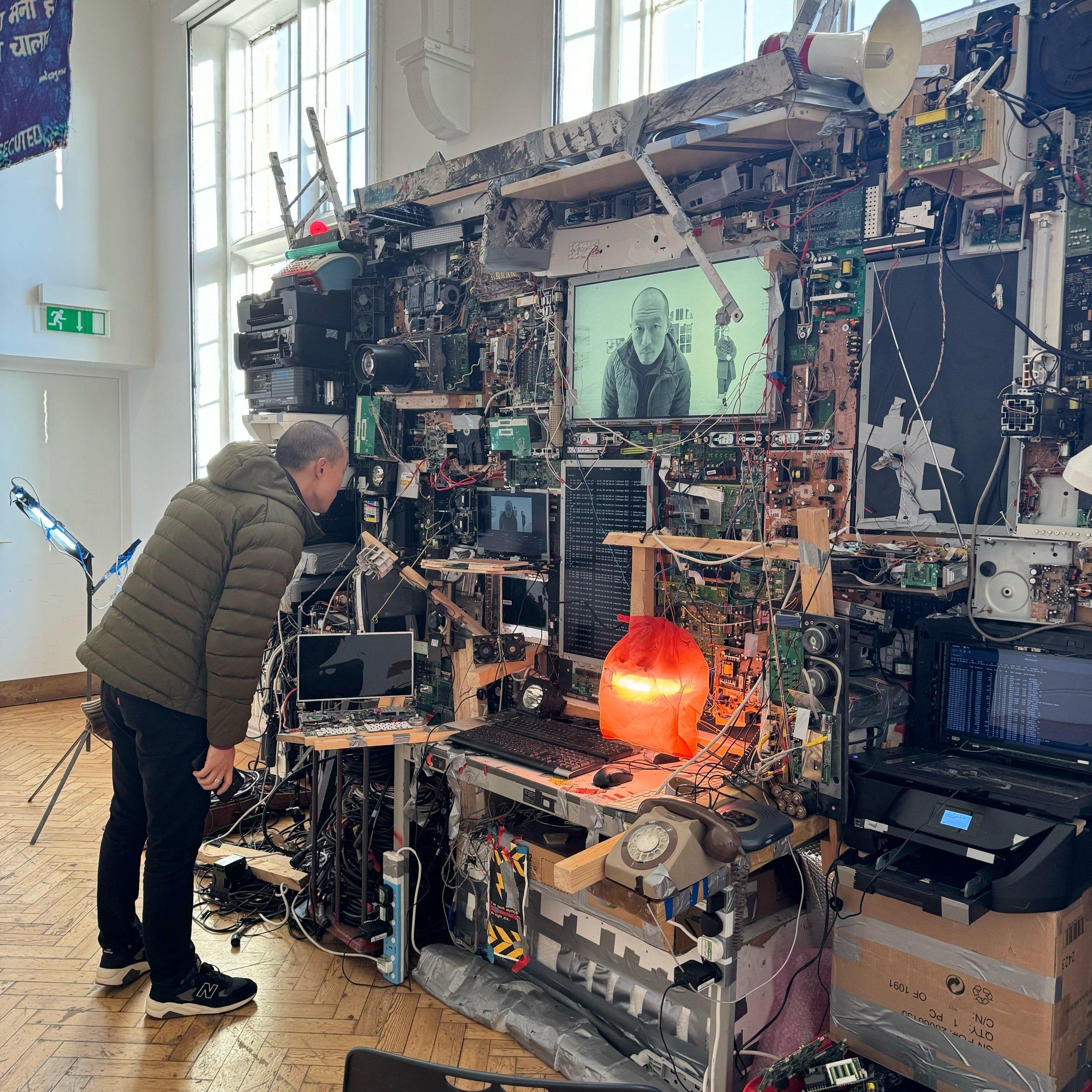
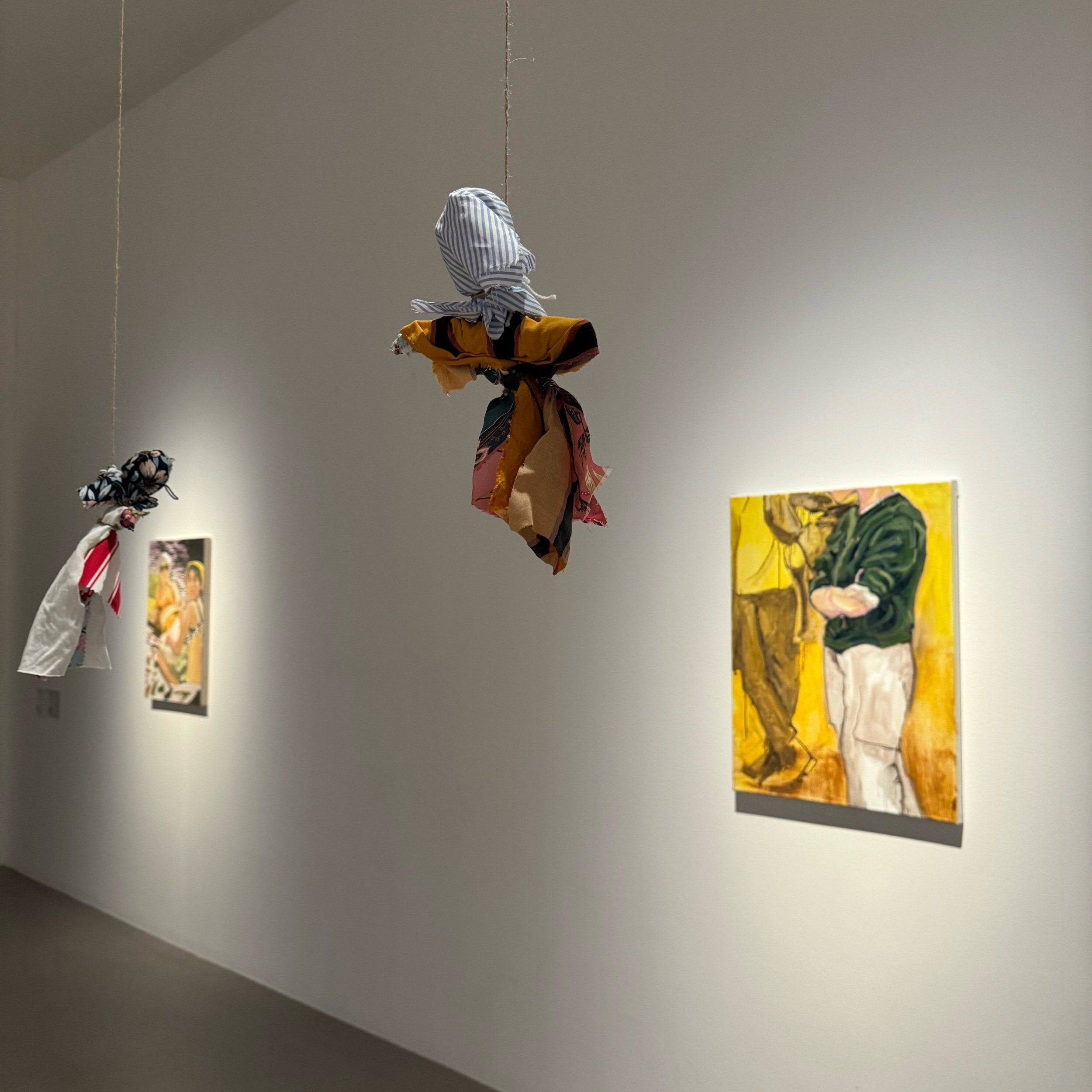
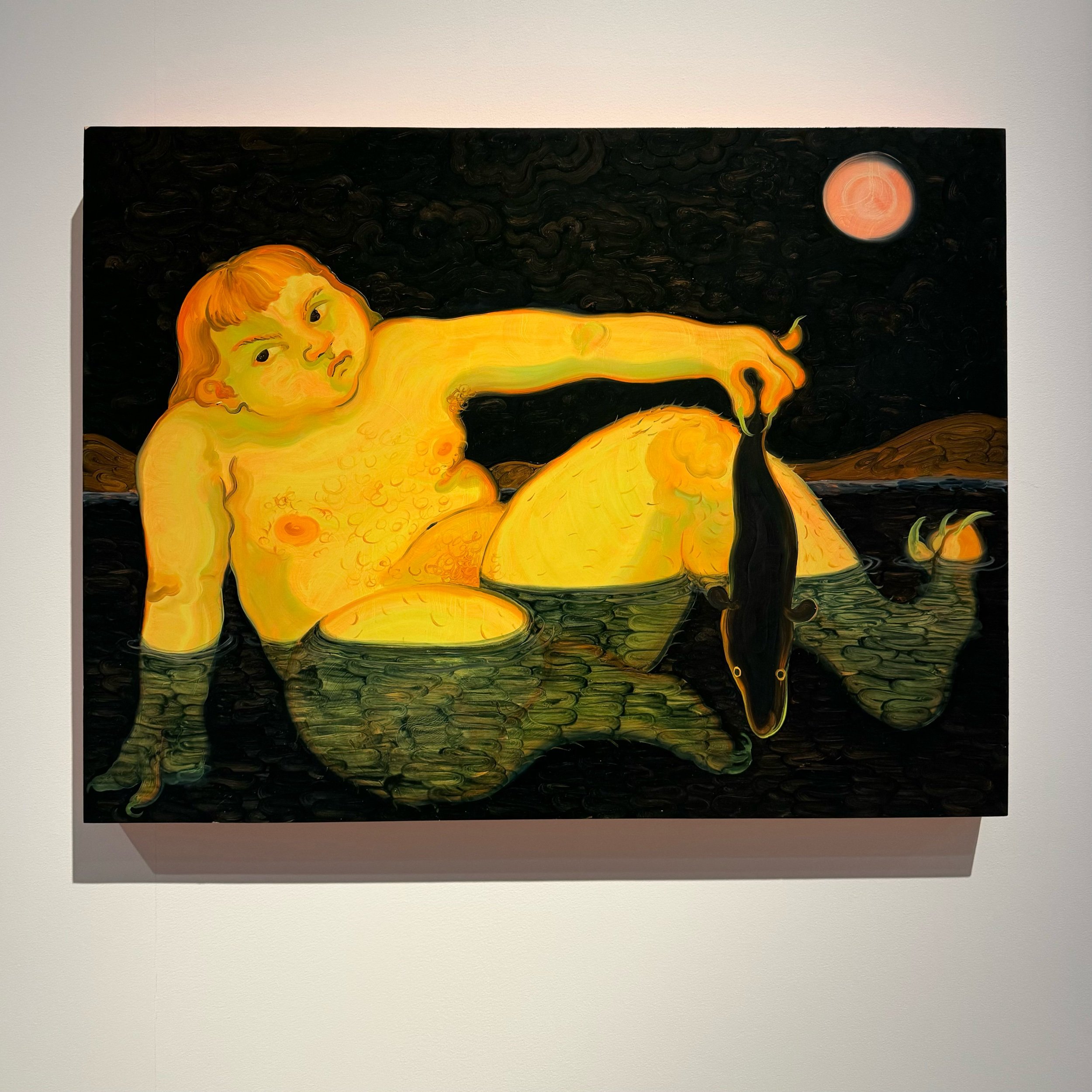
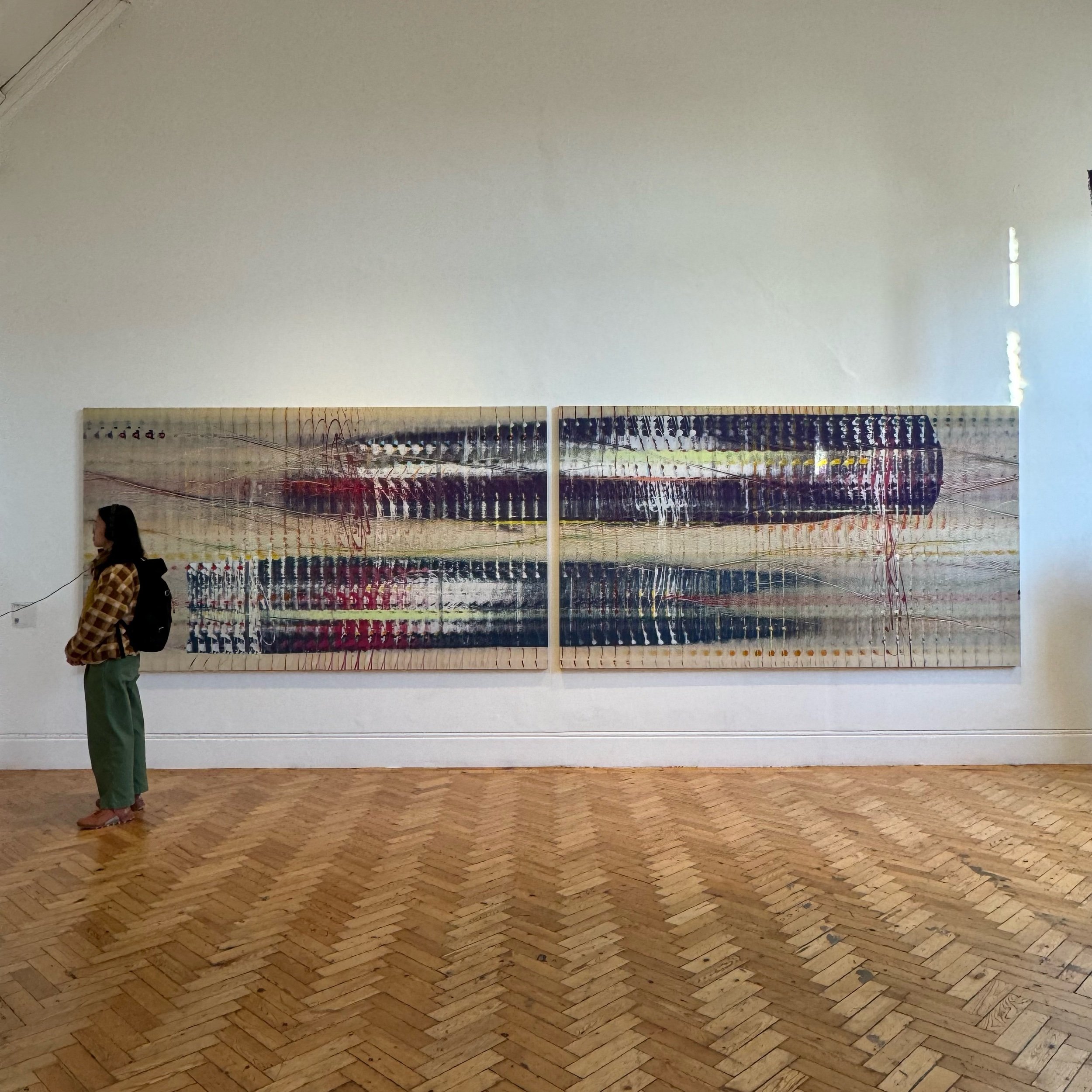
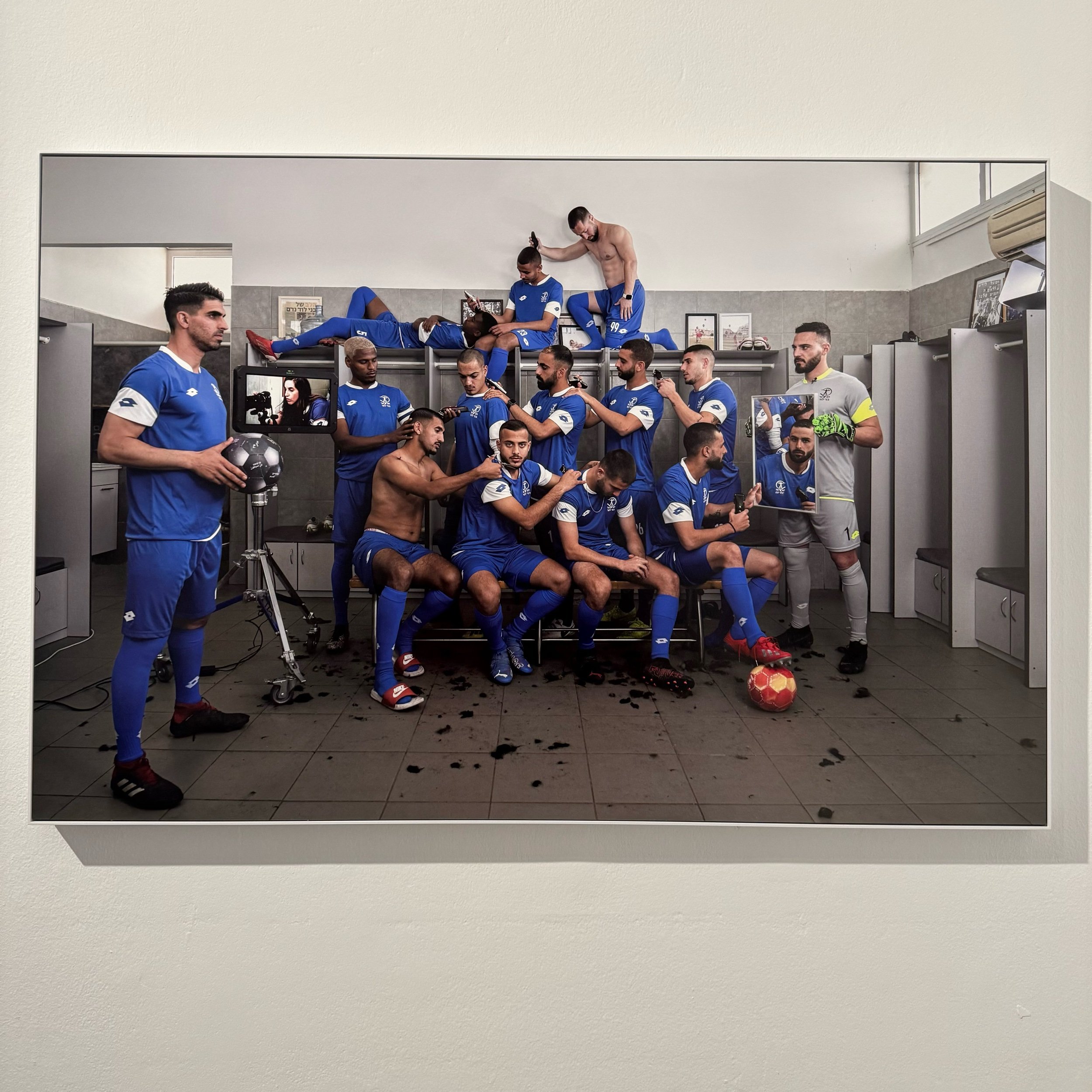
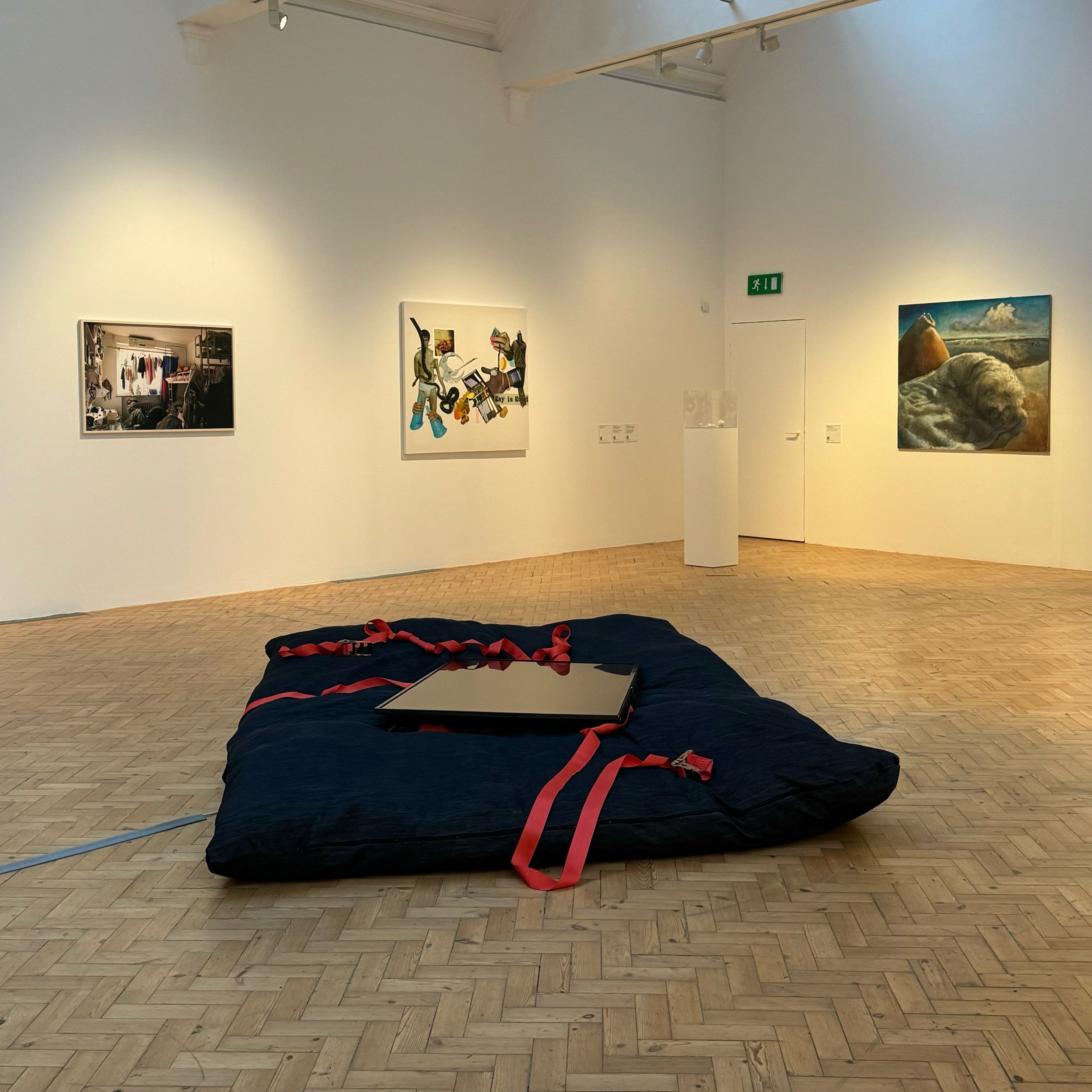
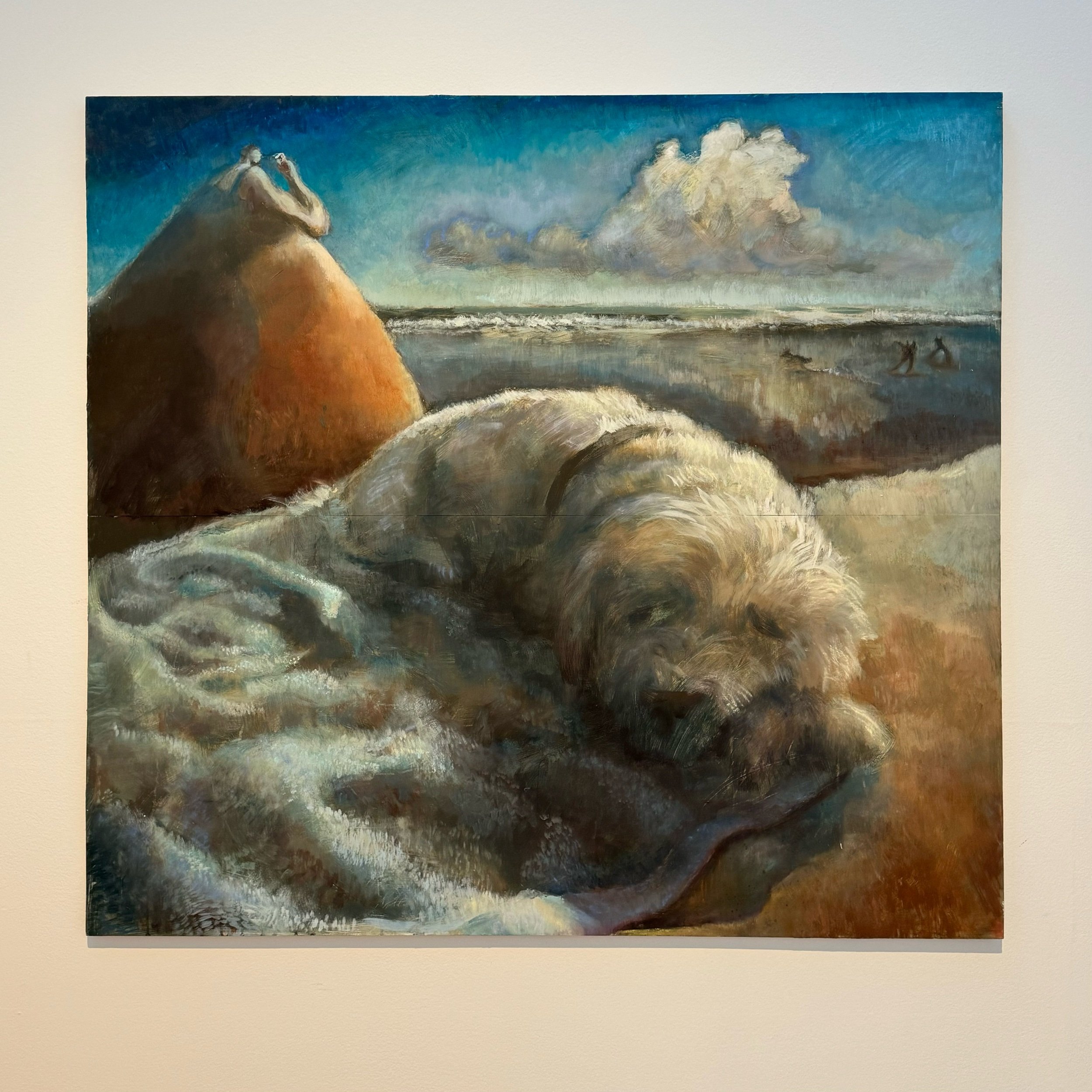
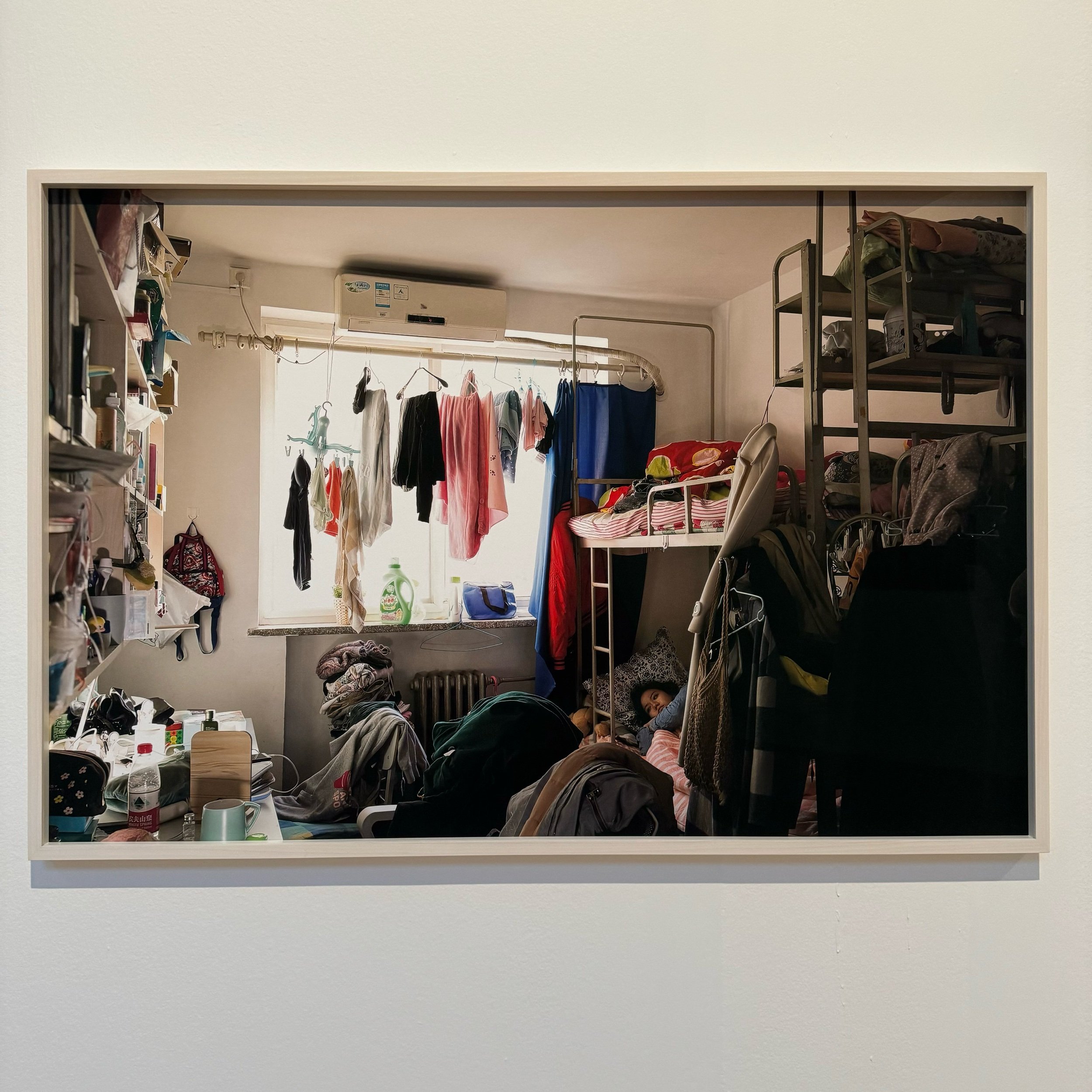
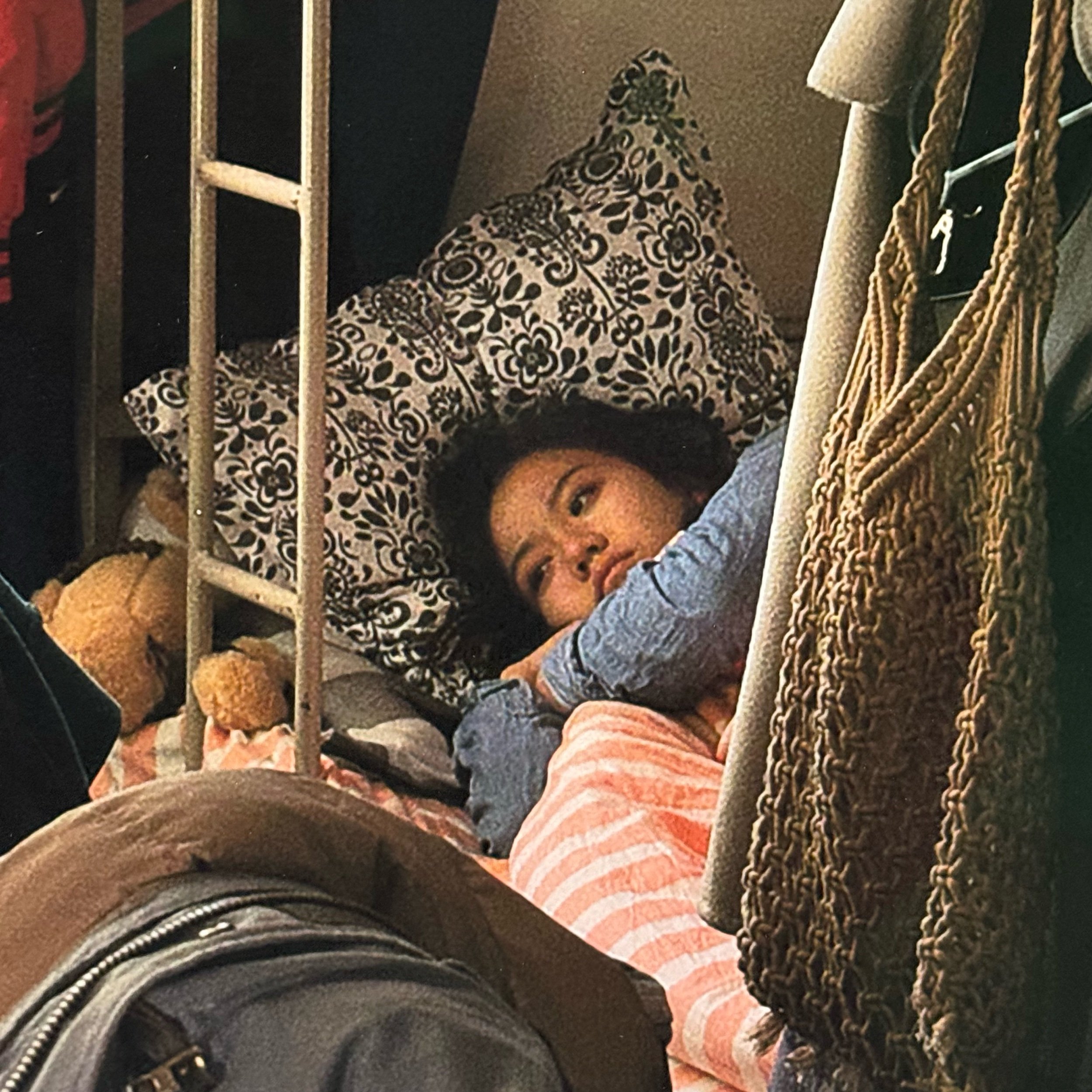
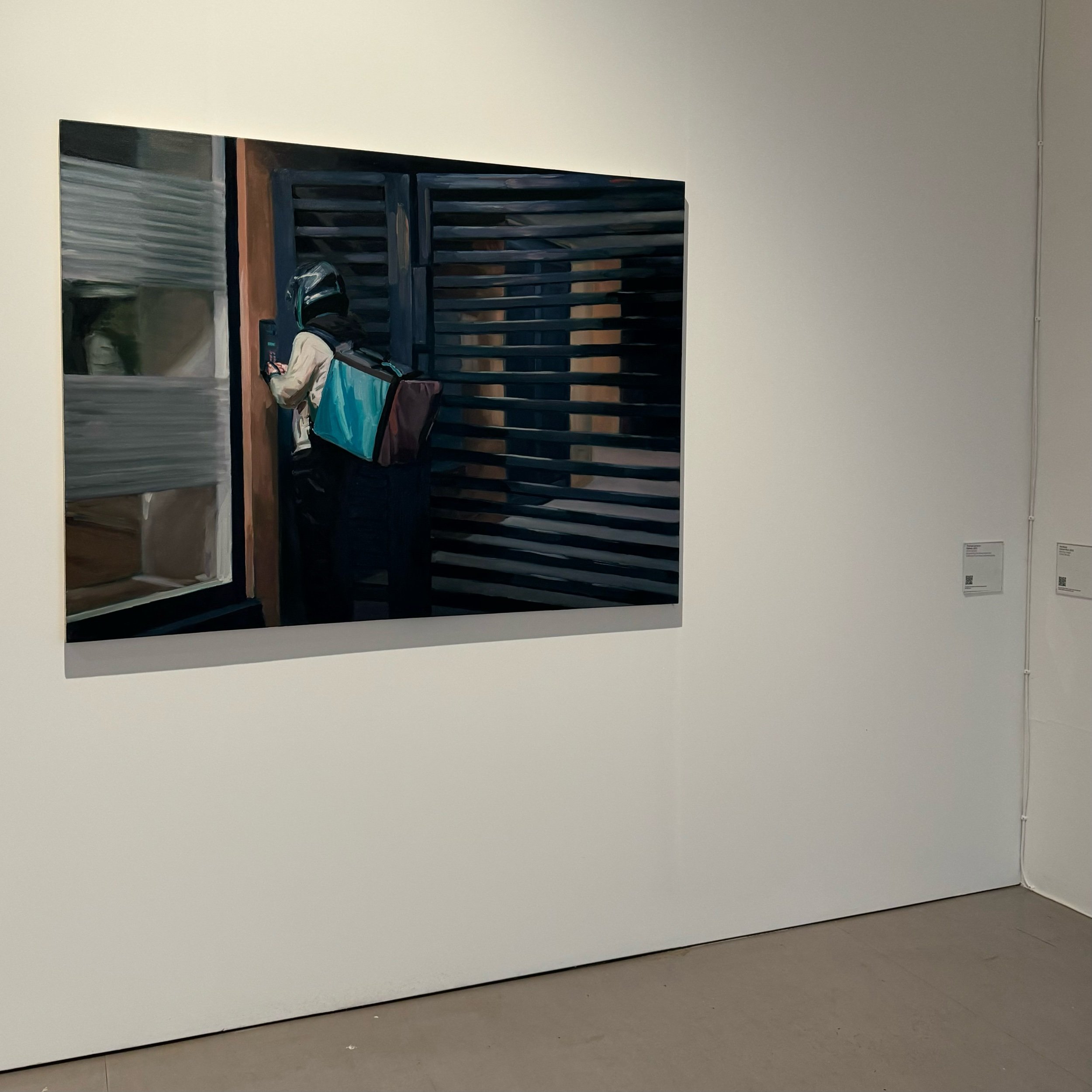
Yes, the works are good. You’d expect nothing less from an annual exhibition that’s been running since 1949. This year you’ll meet 55 emerging and early career artists working in a wide variety of mediums, with a larger than usual selection of photos and video, but not much sculpture. Half a dozen artists might be familiar to anyone who frequented the 2023 London gallery circuit, but the majority are exciting new names from outside the capital that you’ll want to keep an eye on. And that’s all I’m going to say about the quality, because walking through rooms filled with technical proficiency and fresh artistic visions I was distracted by uneasy feelings of isolation and loneliness.
It’s probably not intentional, at least not if you believe the recurring wall texts that reiterate themes like “collectivity, interdependence, care, kinship, climate justice, world-building, networks, borders and identity politics.” Those words speak to community, but with rare exception it soon becomes evident that a majority of the works are about being alone. Portraits show figures asleep, looking tired or worn out. Samuel Zhang narrates about being a stranger in a strange land. A few large ‘groups’ are in fact just multiple perspective views of the same individual. Even Ranny Macdonald’s dog, Sidney Westenskow’s wolfman and Georg Kitty’s nymphs look lonely.
Where is the collectivity? Where is the kinship or care? Where is the joy, or anger, or simply any sort of energetic emotion? People overwhelmingly look sad, their faces far too somber to be serious. In Jiayi Wang’s photo a lonesome woman lies in bed, she looks lost amongst the clutter. In Jame St Findlay’s video a young man appears awkwardly unable to make small talk with his taxi driver. Noa Klagsbald presents a photo of a football team trimming each other’s beards, but they’re far too focussed in what is clearly a posed photo of an activity you’d expect to be full of silly camaraderie.
The lone example of joy comes from Samuel Thompson-Plant’s work showing two young men having a good time doing something unseen. You can only see their heads. Their smiles and loud laughs are infectious, but were they actually there together? Each is shown on a separate monitor, isolated and alone from the other. And so the only work with meaningful human contact was Daniel Rey’s live performance on opening night of five young men lying on the floor, slowly stroking each other. Don’t worry - they were clothed! What’s on display for the run for the show, however, is the giant floor-orgy pillow on which they did it, which now lays empty and un-fluffed, squished underneath a large flatscreen showing a video of their performance.
What are we to make of these powerful images of isolation? Maybe it’s an unintentional byproduct of modern cultural, gender and sexual identity politics, which tend to view tolerance as the least acceptable outcome in a world that encourages and celebrates the expression of the authentic self. Harry Luxton soundtracks his video with Lady Gaga’s ‘Born This Way’ and Savanna Achampong has titled her work “I can be myself here”, just two examples that reiterate the power of identity. But the effort to bring agency to every unique sub-category often results in each of them being an island unto themselves. Phyllis McGowan recites in her audio work: “It’s not that I mind being someone… it’s just that I haven’t worked out yet who that someone is.” In trying to set ourselves apart from each other, are we are setting ourselves apart from each other?
Maybe that’s too cynical a take on social progress. It’s probably not the intended message of the curators, and it’s certainly not something I picked up on when I had previously seen some of these artists or their works. But together in a collection, the repetition of subtle themes becomes hard not to notice. More surprising, however, was that these images were mostly devoid of the one thing on which the media likes to place the blame for isolation: smartphones and tech.
In an ironic twist Zayd Menk’s frustratingly titled “4.3.2‽</>_–⨅⨼”, which looks like the discarded set from a sci-fi hacker film, might be the most intimate work in the show. It’s a jumbled pile of circuit boards and wires, extracted from their shells and re-connected together into what appears to be a living wall that’s blinking, thinking, observing and presenting you right back at yourself. Hidden somewhere amongst the tangled mess is a camera feeding live imagery to it’s monitors. It takes a while to even figure out where the camera is hidden, but such is the conditioning of selfies that most people don’t even look for it. They just enjoy taking photos of themselves displayed as part of the art.
Menk’s work was the only one that I felt actively invited me to cross the divide. It draws you in, and it dares you to engage with it. The rest of the works draw clear boundaries around their individuality. These are not artists struggling with identity, but they are also not a collective in dialogue with each other. Each feels distinctly set apart from the next. It is unintended isolation, and the inevitable progression might be a world in which establishing identity is no longer even required, best exemplified in a work where the hero is absent: Thomas Cameron’s delivery driver.
Viewed from the back, the anonymous gig-economy worker in an oversized helmet stands outside a locked gate, waiting to be buzzed in to bring food to someone (or a couple? or a family? we’ll never know) that would clearly prefer to stay snuggly nestled inside their cocoon rather than venture out amongst humanity.
Plan your visit
‘Bloomberg New Contemporaries’ runs until 14 April.
Free
Visit camdenartcentre.org and follow @camdenartcentre on Instagram for more info about the venue.
Visit newcontemporaries.org.uk and follow @newcontemps on Instagram for more info about the organisation.
〰
For more info about the artists mentioned in the article:
Savanna Achampong — @savanna_achampong
Thomas Cameron — @thomascameronart
Georg Kitty — @georg.kitty
Noa Klagsbald — @noaklagsbald
Harry Luxton — @harryluxton.art
Ranny Macdonald — @rannymac
Phyllis McGowan — @Phyllis_mcgowan
Zayd Menk — @zaydmenk
Daniel Rey — @danielreystudio
Jame St Findlay — @perfect.girlfriend
Samuel Thompson-Plant — @samuelthompsonplant
Jiayi Wang — @Jiayiwang616
Sidney Westenskow — @sidneywesten__
Samuel Zhang — @Samuel.zzc
PLUS…
Check the What’s On page so you don’t miss any other great shows closing soon.
Subscribe to the Weekly Newsletter. (It’s FREE!)
